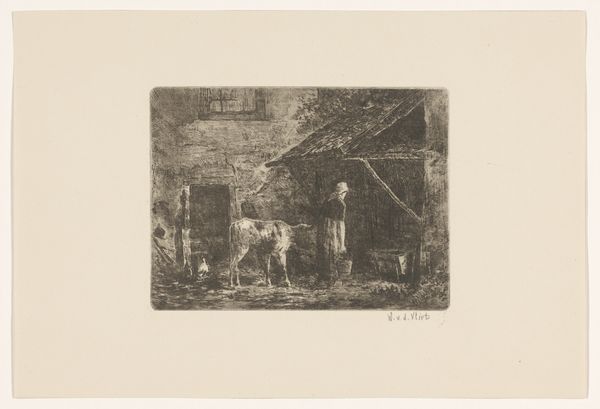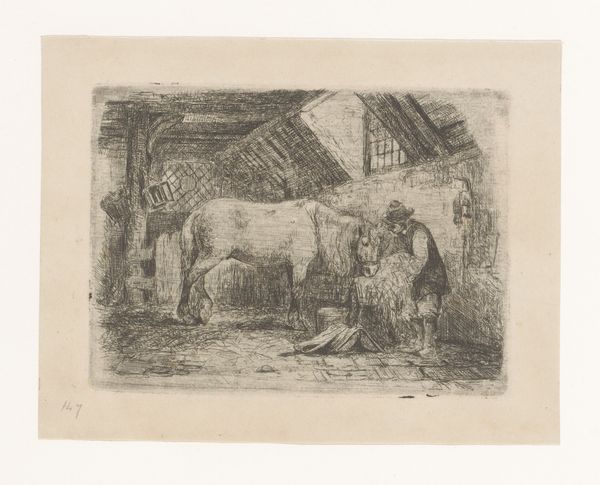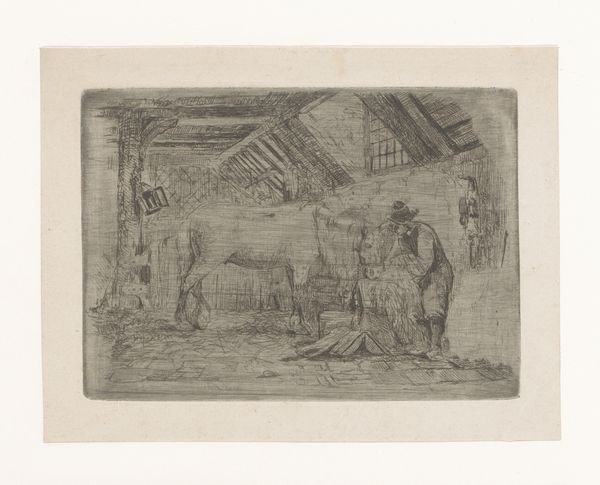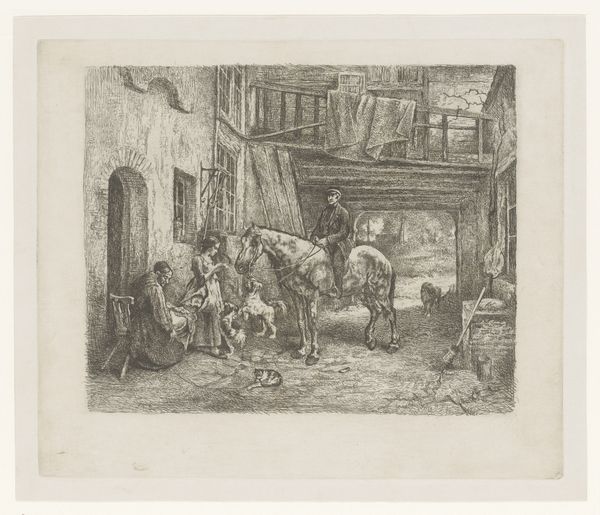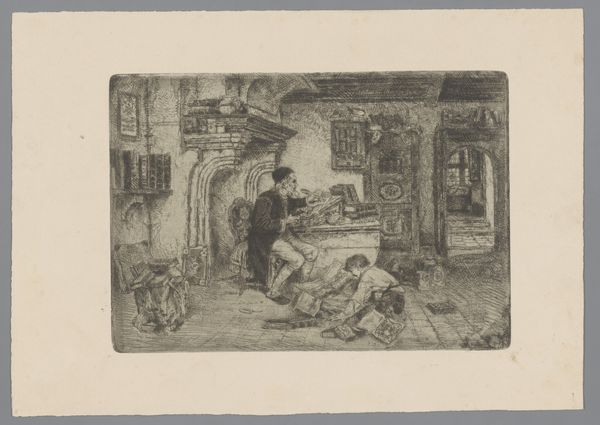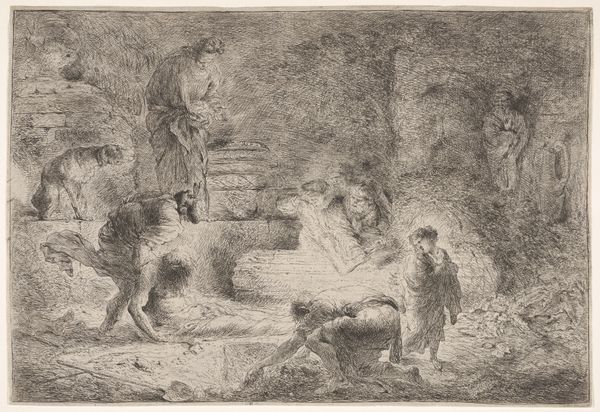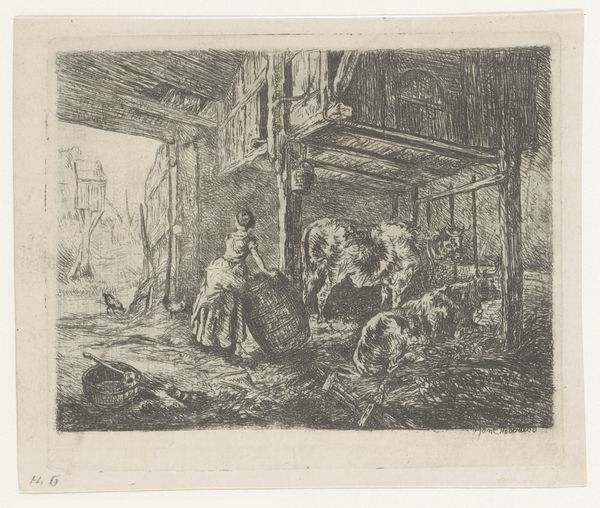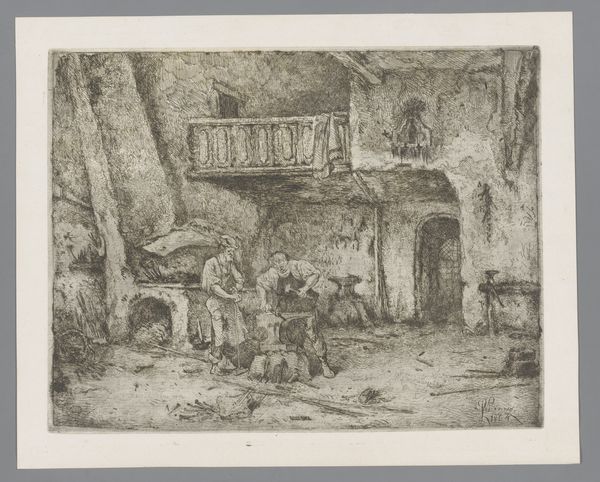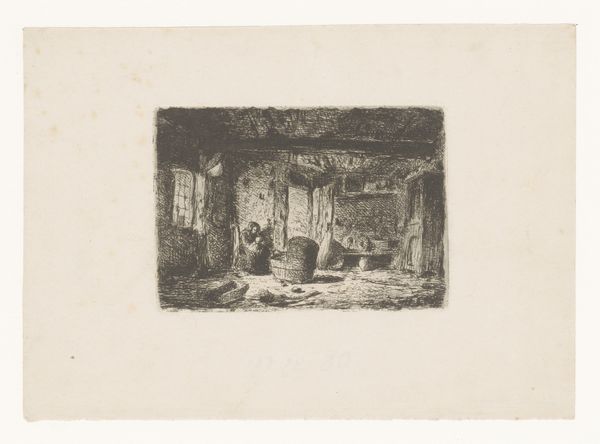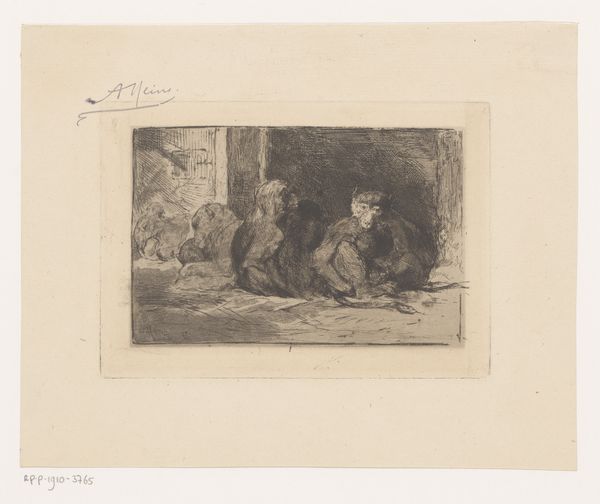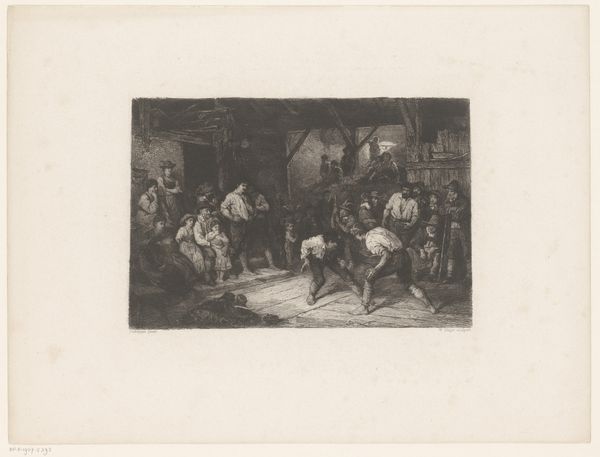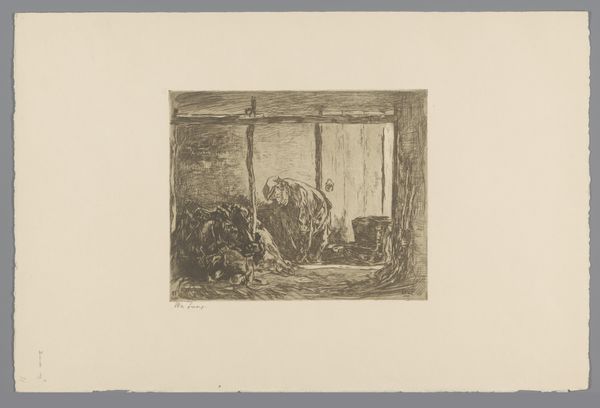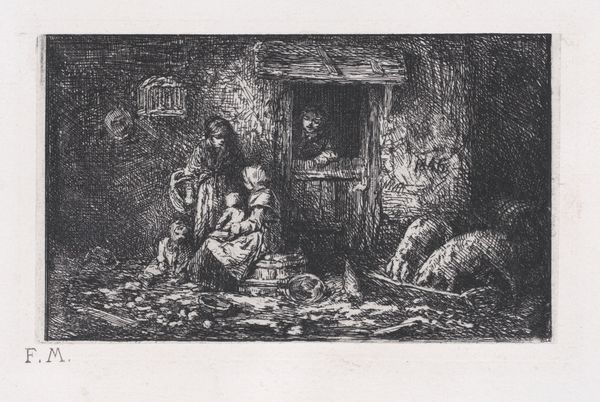
drawing, print, etching, ink
#
drawing
# print
#
etching
#
ink
#
genre-painting
#
realism
Dimensions: height 112 mm, width 134 mm
Copyright: Rijks Museum: Open Domain
Editor: Here we have "Two Butchers in a Pigsty," an etching and ink drawing from 1844 by Charles Jacque. There is such a raw, almost unsettling energy here, partially from the seemingly careless composition, with all the subjects haphazardly strewn around the barn. What social commentary do you think Jacque is offering? Curator: It's a keen observation that the scene feels unsettling, isn't it? We must look at the societal context of the 19th century to comprehend this. Rapid industrialization was reshaping French society, and there was growing awareness among artists regarding the living standards of the working classes. Do you notice the realism in depicting the abjectness of the barn, contrasting with Romantic idealism popular at the time? Editor: I see it now. There is nothing pretty or romanticized here; it’s blunt and kind of…dirty. Does the depiction serve a purpose in that period? Curator: Absolutely. Jacque portrays labor in a raw manner. Instead of glorifying it, he showcases the realities of manual labor. This genre painting then poses an important question: for whom is this art made, and what message does it deliver about class and labor during rapid social transformation? Think about how museums have shaped the reception of images of the working class over time. Do museums promote class equality by showing working-class life? Or, are they subtly creating class divides through selective representation and interpretation? Editor: Wow, I’d never thought about it that way before. It really highlights the power art and its presentation has. I definitely see the impact of historical context now and what Jacque was likely addressing through his subject matter. Curator: Precisely. Understanding the context allows us to challenge ingrained viewpoints and see the work not only as art, but as a testament to social discourse and change.
Comments
No comments
Be the first to comment and join the conversation on the ultimate creative platform.
